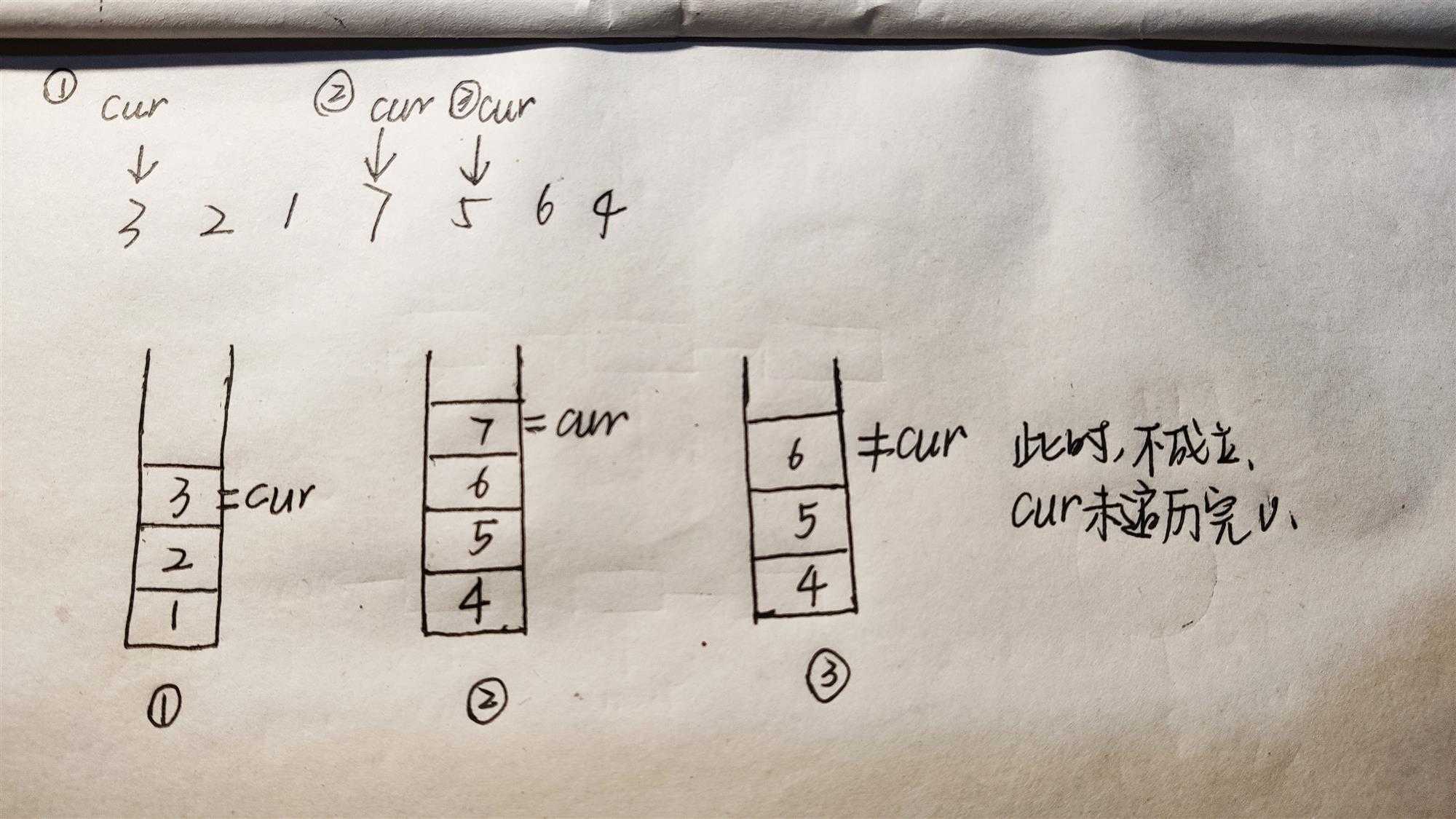标签:size sample aci 遍历 output can bsp keep max
Given a stack which can keep M numbers at most. Push N numbers in the order of 1, 2, 3, ..., N and pop randomly. You are supposed to tell if a given sequence of numbers is a possible pop sequence of the stack. For example, if M is 5 and N is 7, we can obtain 1, 2, 3, 4, 5, 6, 7 from the stack, but not 3, 2, 1, 7, 5, 6, 4.
Each input file contains one test case. For each case, the first line contains 3 numbers (all no more than 1000): M (the maximum capacity of the stack), N (the length of push sequence), and K (the number of pop sequences to be checked). Then K lines follow, each contains a pop sequence of N numbers. All the numbers in a line are separated by a space.
For each pop sequence, print in one line "YES" if it is indeed a possible pop sequence of the stack, or "NO" if not.
5 7 5
1 2 3 4 5 6 7
3 2 1 7 5 6 4
7 6 5 4 3 2 1
5 6 4 3 7 2 1
1 7 6 5 4 3 2YES
NO
NO
YES
NO
1 #include <iostream> 2 #include <stack> 3 #include <vector> 4 using namespace std; 5 int main() 6 { 7 int m, n, k; 8 cin >> m >> n >> k; 9 for (int i = 0; i < k; i++) { 10 stack<int>s; 11 vector<int>v(n); 12 for (int j = 0; j < n; j++) { 13 cin >> v[j]; 14 } 15 int cur=0;//v中元素的下标 16 for (int j = 1; j <= n; j++) { 17 s.push(j); 18 if (s.size() > m)break; 19 while (!s.empty() && s.top() == v[cur]) { 20 s.pop(); 21 cur++; 22 } 23 } 24 if (cur < n) 25 cout << "NO" << endl; 26 else 27 cout << "YES" << endl; 28 } 29 return 0; 30 }
标签:size sample aci 遍历 output can bsp keep max
原文地址:https://www.cnblogs.com/PennyXia/p/12494301.html